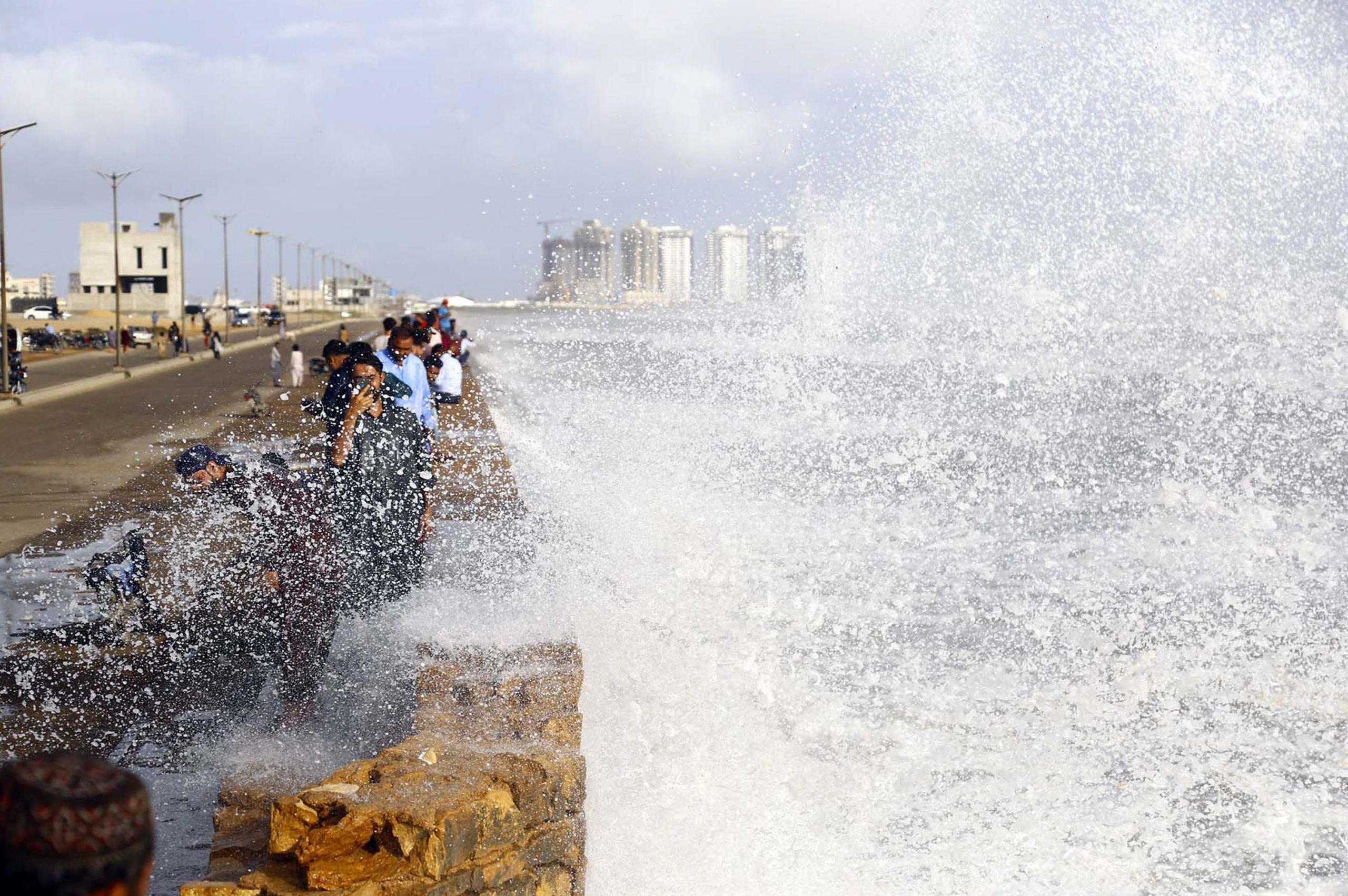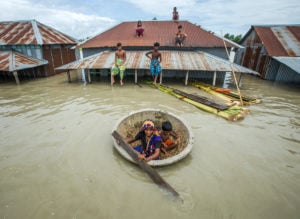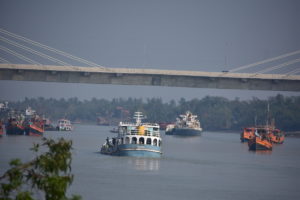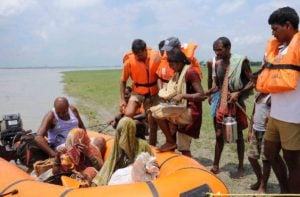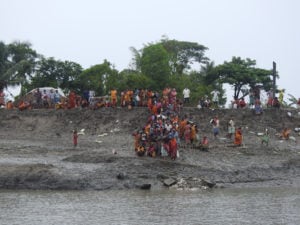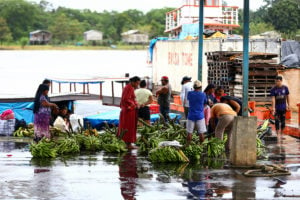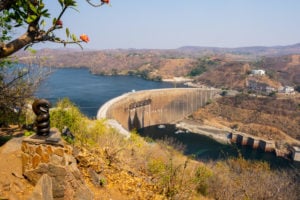As disaster management authorities in both Gujarat in India and Sindh in Pakistan evacuate coastal residents, issue alerts, and earmark shelters in preparation for Cyclone Biparjoy, the need for the two climate-vulnerable South Asian nations to engage closely in the face of shared threats is clearer than ever.
Cyclone Biparjoy (which means ‘disaster’ in Bengali) surged in the Arabian Sea in early June, and is expected to make landfall on the coasts of India and Pakistan 15 June. In the last 48 hours, both countries have forecast high intensity winds (up to 155 kmph) that could move heavy objects. Both have ordered fishers and their boats to move out of deep sea waters in the Arabian Sea. And both are advising their citizens to avoid the open sea and coastline.
In the recent past, major cities in India and Pakistan, such as Mumbai and Karachi, have been paralysed as roads turned to rivers due to unprecedented monsoon rains and resultant urban flooding. But despite these common threats stemming from the imminent cyclone, the neighbouring countries are doing the bare minimum when it comes to sharing meteorological data. Meanwhile, seemingly no communication at all is taking place when it comes to disaster relief and preparation.
Cyclone forecasts and warnings
Mrityunjoy Mohapatra, director general of the India Meteorological Department (IMD), told The Third Pole that the IMD has shared forecasts and advisories relating to the path of Cyclone Biparjoy with authorities in Pakistan. “There is a formal arrangement [to share data], and as per the formal arrangement, the IMD acts as a regional specialised centre for tropical cyclones. It provides tropical cyclone advisories in and along 13 Bay of Bengal countries, one of which is Pakistan.”
Mohapatra is referring to India’s status as a regional hub for cyclone warnings for countries with coastlines on the Bay of Bengal and Arabian Sea, as designated by the World Meteorological Organization. As a regional hub, the IMD follows an operational plan to disseminate warning services throughout their region.
But Pakistan’s federal minister for climate change, Sherry Rehman, confirmed to The Third Pole that there is no direct contact between the two countries. “We are not in direct touch, neither are they,” she said via text.
In short, India and Pakistan authorities coordinate where they absolutely have to, and this coordination is limited to automated emails and monitoring of each other’s websites. Beyond tracking cyclones, this approach also applies to sharing of data on other climate-related disasters, such as glacial lake outburst floods (GLOFs), avalanches and landslides in the vulnerable Himalayan mountains. In those instances, too, information is shared grudgingly, and joint planning remains a non-starter. There is no specialised, real-time coordination.
Would the two countries benefit from real-time engagement on climate disasters, with an aim to improve disaster relief? “Obviously,” Sherry Rehman told The Third Pole. “This goes without saying.”
Lack of coordination leaves citizens vulnerable
In the absence of meaningful engagement on extreme weather events and climate disasters, vulnerable communities on both sides continue to suffer. One of the obvious impacts of Cyclone Biparjoy will likely be on fishers and their boats in Sir Creek, the disputed water body which flows into the Arabian Sea and separates India’s Gujarat state from Pakistan’s Sindh province. Strong winds and rough seas often push fishers in the creek out of their intended path. Newspapers in both countries frequently report incidents of coastal authorities arresting fishers from the other side who cross the maritime boundary, sometimes inadvertently due to bad weather.
Will fishers pushed into the wrong territory as a result of Cyclone Biparjoy be jailed in Sindh and Gujarat?
Two months ago, fisher associations from both India and Pakistan made a plea to each other’s respective prime ministers to free nearly 750 of their colleagues currently languishing in jails across the two countries. A Joint Judicial Committee on Prisoners was created back in 2008 as a mechanism to help facilitate the release and transfer of fishers between India and Pakistan. Unfortunately, owing to the political climate between the two countries, that committee has been largely non-functional in the last decade.
There is scientific evidence to suggest that as the planet warms, cyclone activity in the Arabian Sea will become more intense, and avalanches and GLOFs in the Himalayas will become more frequent. Given that global warming is driving climate catastrophes along the rivers and mountains that Pakistan and India share, as well as on their contiguous coastline, the two countries have no option but to coordinate meaningfully on data-sharing and disaster relief if they are to protect their citizens from the worst impacts of climate change.
As an ever-growing number of people in the subcontinent are exposed to extreme heat, precipitation, drought and other disasters, their governments must set differences aside and sit together to address the climate threats that will not wait for politics.
The biggest challenge is of course politics. It comes in the way of necessary coordinationMalik Amin Aslam, former advisor on climate change to the Pakistan prime minister
Speaking to The Third Pole, Malik Amin Aslam, Pakistan’s former advisor to the prime minister on climate change, noted that climate-change disasters will pose ever greater threats in the future, and that coordination between India and Pakistan is critical.
“Cyclonic activity, intensity and frequency is significantly enhancing due to climate change – and this is happening along with a compendium of other disasters that Pakistan faces. They are increasing with a magnitude of three times per decade and are a cause for real concern,” Aslam said.
He added: “There is no formal [information sharing] system in place, which is unfortunate because climate change doesn’t recognise manmade boundaries. In our government, we tried to create a platform to coordinate for floods and cyclones via SAARC [the South Asian Association for Regional Cooperation], with an aim to create a formal mechanism. But the biggest challenge is of course politics. It comes in the way of necessary coordination.”
